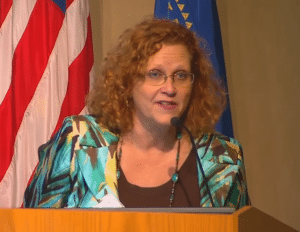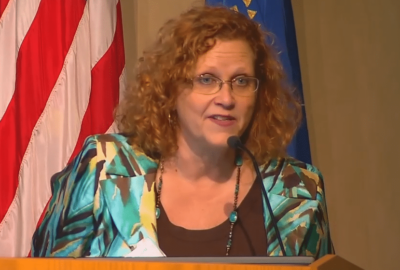

Andrea Norris, the chief information officer at the National Institutes of Health, said her agency is investing heavily in people, tools and cloud services to t...
This means each bureau across the agency is looking for the right tools and the right people to make that blood pump faster to reach the vital mission organs.
Andrea Norris, the chief information officer at the National Institutes of Health, said her agency is investing heavily in these areas, maybe most importantly in people.

“We are recruiting for a new chief data science strategist. It’s an incredibly important position that will have significant impact of the direction of biomedical research over the next decade,” Norris said at the AFCEA Bethesda Health IT day in Bethesda, Maryland. “This position will report directly to the director of NIH. They are going to be responsible for helping us implement our data science strategic plan. They will have a team of incredibly highly experienced individuals. They will have significant fiscal resources. They will be our advocate and liaison with international activities that are underway in the biomedical research space in terms of standards, ontologies, technology practices. They will work very closely to help us build this sustainable platform for these incredibly large data sets that we are now generating through electronic health record data, imaging data and genome data.”
Norris said NIH would like to get someone on board as quickly as possible because need for these skills are growing at an incredible rate.
She pointed to the changes over the last 15 years to just sequencing the first human genome, which took $3 billion and 10 years in 2003. By 2010, it was $10 million, and today it takes less than an hour and costs $1,000.
“We are generating vast amounts of data across all the spectrums and across all the diseases. The opportunity is how can we use that data, pull value out of that data in ways we can’t imagine through things like artificial intelligence, through just interoperability and integration and through better understanding of the incredibly rich data sets,” she said during the panel that was part of a live Ask the CIO.
Over at HHS headquarters, Todd Simpson, the chief product officer at HHS, said he spends about 80 percent of his time focused on data. He said the areas he’s focused on is developing a business analytics platform and a data lake around some back office data sets like human resources and procurement.
“The goal right now is to move from where we are at HHS, which I maintain a data warehouse for HHS and it holds a lot of HR data, and then we have folks like Jose Arrieta, [HHS’s director of the Office of Acquisition Workforce and Strategic Initiatives] who has done a lot of really good things with the accelerate program with procurement data. We need to make all that data talk so that we can actually figure out if people are spending more money at the end of the year, is travel going up? What kind of spending is taking place so we can be more transparent and more responsible,” he said.
Simpson said HHS is evaluating business intelligence tools to give them several new capabilities in the data lake, including real time and predictive analytics, blockchain integration and artificial intelligence.
These tools also will open the door for greater data sharing across HHS.
At NIH, Norris said they are pushing hard to be more transparent and open when it comes to the data the agency produces as well as the research it funds.
“We are also affecting our data sharing policy. We are now going to require all individuals who are funded, regardless of the funding level, to submit a data sharing plan on how they are going to make their data accessible, how they are going to sustain it and how they are going to make it usable by other researchers,” she said.
Underlying much of these efforts is the move to the cloud.
Norris said NIH launched a cloud initiative with Google and Amazon called STRIDES to help transition the entire national research ecosystem to these platforms to make it easier to find and access data.
“We are negotiating on behalf of the entire national research ecosystem. We are trying to move 300,000 researchers and 2,500 academic institutions that are publicly funded for research into cloud environments,” she said. “When we negotiate and work through arrangements with companies, we are looking for companies who have that vision, not just selling to an organization in one institute or two institutes in NIH.”
Copyright © 2024 Federal News Network. All rights reserved. This website is not intended for users located within the European Economic Area.
Jason Miller is executive editor of Federal News Network and directs news coverage on the people, policy and programs of the federal government.
Follow @jmillerWFED


